
The first socioeconomic formation in human history. The foundations for the
doctrine of the primitive communal system as a special socioeconomic formation
were laid by K. Marx and F. Engels and were subsequently developed by V. I.
Lenin. Most Soviet scientists and scholars believe that the primitive communal
system existed from the appearance of the first human beings to the emergence of
class society. From the standpoint of archaeology, this period basically
coincides with the Stone Age. In the primitive communal system the relationship
to the means of production was the same for all members of society.
Consequently, the mode of obtaining a share of the social product was the same
for all. For this reason, the term “primitive communism” is applied to this
system, which is distinguished from succeeding stages of socioeconomic
development by the absence of private property, classes, and the state.
There are various viewpoints concerning the origins of the primitive communal
system. In the earliest period of history, human beings and society developed.
People lived in a formative society that many Soviet scholars call the primitive
human herd. If the archanthropoi (for example,
Pithecanthropus, Sinanthropus,
Atlanthropus, and Heidelberg man) are considered to be the first human
beings, the origin of the primitive human herd dates from about 1,000,000
B.C. If
pre-Zinjanthropus, or
Homo habilis (capable
human), is considered to be the first human being, then the primitive herd dates
from at least 2,000,000
B.C., and perhaps earlier. According to
the most widely held point of view, the epoch of the primitive human herd
coincides with the Lower Paleolithic period. Approximately 40,000 to 35,000
years ago, during the transition from the Lower Paleolithic to the Upper
Paleolithic, the transformation of the paleoanthropoi into human beings of the
modern type (neoanthropoi) was completed. The development of man
(anthropogenesis) could not have been completed without the formation of society
(sociogenesis). Consequently, there are grounds for believing that the primitive
human herd was transformed into a genuine, shaped human society on the threshold
of the Upper Paleolithic.
Most scholars refer to the primitive human herd as the first stage of the
primitive communal system. Others believe that the concept of socioeconomic
formations is applicable only to the levels of evolution of a shaped society.
Accordingly, they treat the primitive communal system as the initial stage of
development of a shaped society, a stage preceding the emergence of classes and
the state. In archaeological terms, this stage coincides with the Upper
Paleolithic, the Mesolithic, the Neolithic, and perhaps the beginning of the
Aeneolithic period.
Throughout the period of primitive communism there was no written language.
The history of the primitive communal system has been reconstructed primarily
through the data of paleoanthropology, archaeology, and cultural anthropology.
There are anthropological and archaeological materials dating from this epoch,
but although they provide an adequate idea of the physical appearance and
material culture of primitive humans, they tell little about social relations.
On the basis of data collected by cultural anthropologists, it is possible to
make judgments about all aspects of primitive communal society as a whole.
However, cultural anthropology is confined to knowledge of primitive communal
systems in the form they acquired among peoples who remained at the stage of
preclass society through modern times—that is, epochs six millennia after the
appearance of the first class societies. Therefore, contemporary ideas of the
primitive communal system include both firmly established propositions and quite
a few disputed ones.
Soviet researchers are united on a major point—the belief that the primitive
communal system was collectivist. But they differ over many more concrete
questions. There are two main lines of thought: the “clan” theory and the
“commune” theory. According to the clan theory, on the threshold of the Upper
Paleolithic the primitive human herd, in which promiscuity prevailed, was
transformed into a matrilineal clan, which was in fact the first instance of a
shaped society. By virtue of exogamy, the clan could not exist without ties to
other clans. Consequently, the emergence of the clan coincided with the
appearance of a system consisting of two intermarrying clans—dual organization.
Marriage originated with the clan—initially, group marriage (dual organization)
and, in addition, dislocal marriage. As a result of dislocal marriage, the
matrilineal clan coincided completely with the community: the clan was the
community; the community was the clan.
Some adherents of the matrilineal clan theory do not accept the thesis of
dislocal group marriage but favor the thesis of matrilocal marriage. From their
point of view, the matrilineal clan and the community do not completely coincide
from the very beginning. Each community was made up of people from several
clans, but each had as its foundation a single clan. In this sense, each was a
clan community. Adherents of the proposition that group marriage was dislocal
believe that the clan community structure emerged later, after the appearance of
pairing marriage and the family. In many instances, the clan remained
matrilineal until the epoch characterized by the accumulation of riches and the
transition to the private possession of wealth by individual families. These
developments usually resulted in the emergence of the patrilineal clan. Taking
this as their point of departure, some researchers distinguish matriarchy and
patriarchy as the main stages in the evolution of the primitive communal system.
However, cultural anthropology has found evidence that under certain concrete
conditions (for example, among the Australian aborigines), the matrilineal clan
gave way to the patrilineal clan long before the beginning of the formation of
private property. In other cases, the matrilineal clan persisted until the
emergence of classes and the state (for example, among the Minangkabau of
Sumatra, the Nasi of Yünnan Province in the People’s Republic of China, and the
Ashanti of West Africa).
As the primitive communal system develops, the clan gradually loses many of
its original functions, including its economic ones, and ceases to be the
foundation of the community. It may continue to exist for a long time, but
primarily as an institution regulating marital relations, ensuring the defense
of its members, and supervising the observance of traditions, worship, and
rituals. In this capacity the clan is encountered in class society (for example,
among the ancient Greeks and the Romans). At a later stage of the primitive
communal system the main economic unit was the commune, which usually consisted
of representatives of many clans. This circumstance is the basis for the
periodization that designates the epoch of the primitive clan commune and the
epoch of the primitive territorial commune as the main stages of the primitive
communal system.
According to another viewpoint, the “commune” theory, the basic unit of the
primitive communal system at all stages of its development was the primitive
commune, which always consisted of pairing families. The commune and the family
were the defining and universal units of the primitive communal system. The clan
never had economic functions. Its main role was the regulation of marriage.
Adherents of this viewpoint do not agree on when the primitive commune first
developed. Some of them believe that it emerged on the threshold of the Upper
Paleolithic period. Others date its origin to an earlier time; in so doing, they
often express opposition to the concept of the “primitive human herd.”
Supporters of the commune theory also disagree on when the clan emerged.
The disagreements between the supporters of the clan and commune theories
should not, however, be overestimated. If extreme viewpoints juxtaposing the
clan and the commune are excluded, the majority of researchers generally agree
that during the epoch when the primitive communal system flourished, the clan
and the commune essentially coincided.
The collectivist character of primitive production, which is recognized by
all Marxist researchers, was the result of the extremely low level of
development of the productive forces. K. Marx observed: “This primitive type of
collective or cooperative production resulted, of course, from the weakness of
the isolated individual, and not from the socialization of the means of
production” (K. Marx and F. Engels,
Soch, 2nd ed., vol. 19, p. 404).
The weakness of human beings in the struggle against nature was particularly
telling in the earliest stages of the primitive communal system. The first
humans (archanthropoi) settled in a comparatively small area restricted to
regions with a warm climate (Africa, East and South Asia, and Southwestern
Europe). The dominant form of human activity was usually hunting, including
collective hunting for large animals. Wooden spears and clubs, as well as
stones, served as weapons. Gathering, which apparently supplied most of the
food, played an important role. It is an indisputable fact that
Sinanthropus used fire, although it is probable that they had not yet
learned how to make it. With the transition to paleoanthropoi (Neanderthals),
hunting became the main source of livelihood. Humans became acclimatized in
regions with harsh conditions. Although methods of working stone were perfected,
on the whole, there was little progress in making tools during the hundreds of
thousands of years of the Lower Paleolithic. From pebbles with one or two crude
chips on one end, man progressed to a relatively small number of conventional
implements, of which the best known are the side-scraper and the triangular
point.
Techniques of working stone changed radically with the transition to the
Upper Paleolithic period. A very valuable and varied set of specialized
implements appeared (for example, chisels, adzes, knives, and saws). Techniques
of working bone and horn developed. For the first time, various composite
implements were made (spears, javelins, and harpoons with flint and bone tips).
These developments resulted in the increased productivity of the economy, which,
however, continued to be appropriative throughout the Upper Paleolithic and
Mesolithic periods (approximately 25,000–30,000 years). Hunting and gathering,
supplemented by fishing, were the principal sources of livelihood. The inhabited
area continued to expand: humans settled in Australia, entered northwestern
America via the Bering Strait, and gradually populated the entire Western
hemisphere.
The Lower Paleolithic period—the epoch of the primitive human herd—was
characterized by the formation of social relations in general, and especially
primitive collectivism. There were two main stages in the evolution of the
developed primitive communal system, which began with the transition to the
Upper Paleolithic period. During the first stage the productive forces had
reached a level of development at which the product was no greater or only
slightly greater than was necessary to guarantee physical existence, or
survival. (In other words, the product was life-supporting, and if there was a
surplus product, it was small.) Under these conditions, the only possible mode
of distribution was the equalizing mode. Essentially, equalizing relations meant
that the entire product, regardless of how and by whom it was obtained, was the
complete, indivisible property of the group. As a result, by virtue of
affiliation with the group, each member had a right to a share of the product.
Neither participation in production nor the amount of the individual member’s
contribution to the creation of the product was taken into account in
distribution, which was basically carried out solely in relation to need.
Consequently, members of the group received unequal shares. Adult males, for
example, received a greater share of the product than children. The absolute
size of the portions depended on the size of the product. This provided
sufficient motivation for labor, as long as there was no surplus product or an
extremely small one. Only the strenuous activity of all able-bodied members of
the group could guarantee that each member would receive the share necessary for
survival. Thus, at the earliest stage of the evolution of the primitive communal
system, there could only be collective property. What was sometimes called
personal property was actually collective property available for personal
use.
The emergence of a minimal surplus product presented the possibility for
exchange between members of different groups. Gradually, this possibility became
a reality. However, the type of exchange that developed in primitive communal
society did not involve commodities. In ethnology, it is referred to as the
exchange of gifts, or gift exchange, a form prevalent in preclass society.
Cultural anthropologists have found evidence that the principal motivation for
the gift exchange was the creation of new ties, or the maintenance of previously
existing social ties between individuals or groups.
During the first stage of the evolution of the primitive communal system, the
groups usually consisted of no more than a few dozen members. Although they were
small, they were independent social organisms in many respects, especially in
economic matters. There were no special governing bodies or officials. Some
individuals enjoyed considerable influence, but it was based exclusively on
their personal qualities. The only regulator of behavior was the will of the
group (its moral code), which was expressed in public opinion and consolidated
in traditions. Equality between men and women was characteristic of this
stage.

The total independence of groups in deciding internal affairs did not
preclude ties between them. Moreover, exogamy made these ties inevitable. As a
rule, several groups living in an area constituted a system of social
organisms—a tribe. Usually, the primitive tribe was not an organized unit. In
particular, it lacked general governing bodies. Contacts between groups within a
tribe were more frequent and more regular than contacts between groups from
different tribes. Consequently, all the groups in a single tribe had a common
language and culture, and the primitive tribe was also an ethnic community.
In many respects, the intellectual pursuits of the people of this epoch were
undifferentiated and syncretic. The differentiation of various forms of social
consciousness was just becoming evident. Through practical activities, the
people built up a body of knowledge about their environment and about
themselves. However, their ideas included much that was erroneous and illusory.
The existence of religion in the Upper Paleolithic is indisputable. At this
stage, it consisted of magic and totemism, the rudiments of which had apparently
emerged by the time of Neanderthal man. It is also probable that animism had
developed by the Upper Paleolithic period. Representational art dates from this
period. Realistic, multicolored drawings of animals have been found in caves in
southern France, northern Spain, and the Southern Urals (the Kapova Cave).
Primitive sculptures in bone, horn, stone, and clay have been discovered.
Drawings from the Upper Paleolithic provide evidence of primitive dances.
Production developed slowly but steadily. Progress was made in techniques of
working stone, bone, and horn. Methods of hunting and fishing were perfected.
During the Mesolithic period the use of the bow and arrow began to spread.
Apparently, the domestication of the dog dates to this period. These
developments created the conditions for the transition from the first phase of
the primitive communal system to the second.
In the second phase of the primitive communal system the level of development
of the productive forces made possible a comparatively large surplus product,
which laid the foundation for and predetermined a fundamental reconstruction of
the entire system of socioeconomic relations.
During the epoch of the primitive communal system the overwhelming majority
of tools were used by individuals. As the isolation and parceling of labor
increased, owing to improvements in the instruments of production and labor
processes, an ever-increasing part of the product created by human labor became
more or less completely private property. Referring to this period of history,
Marx wrote: “The most essential point is the parceling of labor, the source of
private appropriation” (
ibid., p. 419).
The parceling of labor proceeded at an extremely slow, gradual pace. At this
stage, no person, no family, could exist without sharing (systematically) the
products of its labor with other people or other families, without constantly
offering and receiving aid. Inasmuch as there was no need for a more or less
exact correspondence between what a person gave and what he received in return,
these relations were a form of equalizing distribution. The labor mode of
distribution presupposed equivalent compensation for all the products and
services received by a person. In other words, it presupposed the transformation
of distributive relations into exchange relations. The type of exchange
associated with this stage of the primitive communal system was qualitatively
different from commodity exchange, which developed later. Nonetheless, it
contributed to the rise of a type of exchange in which the product gradually
assumed the character of a commodity. In the initial stages, the exchange of
commodities took place only between members of different communities. It was
originally based on the different natural resources at the disposal of different
communities. The development of exchange promoted the establishment of the labor
mode of distribution. The sphere of operation of the labor mode of distribution
gradually expanded. At first, it included only the surplus product; later, it
included the product necessary for survival. As a result, the proportion of the
social product subject to equalizing distribution decreased, and the circle of
persons within which the equalizing principle continued to operate
contracted.
Among the inevitable consequences of the parceling of labor was the
consolidation of personal property, although communal property persisted for a
long time. The parceling of labor also led inevitably to the growth of the
family’s role as an economic unit and the emergence of a degree of inequality in
property among individuals and families. Gradually, the bulk of the surplus
product was concentrated in the hands of a few people, creating the conditions
for the appearance of rudimentary forms of exploitation. Communities became
larger, often including hundreds of people. Structurally, communities became
more complex, consisting of several more or less isolated subdivisions, which,
in turn, might be subdivided. Ties between communities became stronger. In many
cases, more or less stable associations of communities emerged, often developing
as leagues of clans. Like the earlier associations of groups, they were usually
called tribes. Some of them had several thousand members. At this time, most
tribes had a definite internal organization. Apparently, among some primitive
peoples this stage was marked by the emergence of specialized clan, community,
and governing tribal bodies and special officials, such as elders and chiefs. In
some cases, the posts of chief and elders became hereditary.
The transition to the second phase of the primitive communal system took
place as early as the epoch of the dominance of the appropriative economy.
However, it was possible only among hunters, gatherers, and fishermen who lived
under the most favorable conditions. Others remained at the previous stage of
development. This is a graphic demonstration of the unevenness of historical
development. The transition to the second phase was not ruled out for tribes
living by appropriation, but for those whose economy was based on production, it
was altogether inevitable. Cultural anthropologists do not know of any people
who engaged in land cultivation and in livestock raising and remained in the
first phase of the primitive communal system.

Archaeological data provide evidence that in some parts of the Middle East
(northern Iraq and Palestine) the transition to land cultivation and livestock
raising took place during the Mesolithic period, in the ninth-seventh millennia
B.C. By the fifth millennium
B.C. a new form of
economy had become established in many areas of Southwest Asia (Turkmenia, Iran,
Anatolia, and Syria) and in the Balkans, and by the sixth-fifth millennia
B.C., in Mesopotamia, the Nile Valley, and Central Europe.
The transition to land cultivation and livestock raising was a very important
turning point—a genuine revolution—in the development of mankind’s productive
forces. Previously, human beings had simply used implements they had created to
appropriate food found in ready form in nature. With the transition to land
cultivation and livestock raising, human beings, having brought certain natural
processes under their control for the first time, began to produce food, thus
creating the conditions for a relatively rapid growth of population.
Because it ensured the regular production of a surplus product, the emergence
of land cultivation and livestock raising made possible, and subsequently
inevitable, the transition from preclass to class society. All the necessary
conditions for the beginning of the formation of class society had been created
by the end of the second phase of the primitive communal system. The formation
of class society was a protracted, complex, contradictory process. The parceling
of labor, which had originated in the preceding stage, gradually moved toward
completion. The community was slowly transformed into a system of households
increasingly isolated from each other. Pairing marriage was transformed into
monogamy. Often, this transformation was mediated by the emergence of the large
patriarchal family.
Distinct crafts began to take shape, promoting the further development of
commodity exchange. Inequality in property, which had emerged as early as the
preceding stage, became more deeply entrenched. As they developed, the embryonic
forms of appropriation of the surplus product were transformed into a system of
relations of exploitation. Slavery and various forms of bondage developed.
Increasingly, the free population was stratified into a wealthy, distinguished
minority (sometimes called the clan aristocracy) and a mass of ordinary
community members. Private property developed gradually. Social antagonisms
emerged and grew sharper.

The state began to develop. One of its forms was the military democracy. Wars
for plunder became more and more important, greatly accelerating the formation
of classes and the state. Social organisms grew to include tens and even
hundreds of thousands of people. Increasingly, communities ceased to be
independent social units and became parts of larger organisms, which were
formative states. To a tremendous degree, these changes contributed to the
formation of comparatively large ethnic communities. The unification of tribes
gave rise to ethnicity (
narodnost’).
The formation of class society affected social consciousness. The unitary
moral code of the primitive communal system disappeared, giving way to class
morality. Law developed. The stratification of society was reflected in the
stratification of the supernatural world in the popular consciousness—in the
distinguishing of particularly powerful beings, or gods, among the more or less
equally important supernatural beings (demons, totemic ancestors). Polytheism,
which developed with the rise of class society, sanctified the exploitation of
man by man. Religion was the first form of ideology.


The formation of class society was first completed in two regions of the Old
World—Mesopotamia and the Nile Valley. The Sumerian and Egyptian civilizations
developed in the fourth millennium
B.C., during the Aeneolithic
period. In the Aegean basin (including western Asia Minor), the Indus Valley,
and the Huang Ho Valley early class societies emerged during the Bronze Age, in
the third and second millennia
B.C. The problem of the
socioeconomic structure of the first early class societies is open to
discussion. Some Soviet scholars regard them as slave-holding societies; others
view them as societies characterized by the Asiatic mode of production.
Throughout the world, the emergence of class societies was associated with the
period when the use of metals became widespread. The only known exception is the
ancient Mayan kingdom in the New World (first millennium
A.D.).
However, the transition to the use of metal implements could not in itself
transform a particular society into a class society. Historians and cultural
anthropologists have found that some peoples did not reach the stage of class
society, even though they were acquainted with the use of iron implements, as
well as copper and bronze ones. If these peoples were exposed constantly and for
a long time to the influence of a major system of more advanced social organisms
based on class, the formation of class society inevitably acquired a specific
character among them. They made the transition to a higher socioeconomic class
formation, skipping stages of development through which the rest of humanity had
already passed. For example, among the Slavs and the Germanic peoples, the
formation of class society was completed with the emergence of the feudal
system.

The concept of the primitive communal system as the first socioeconomic stage
of development is found only in Marxist science. Among bourgeois scholars, the
evolutionist L. H. Morgan came closest to developing the concept in
Ancient
Society (1877), a work that was highly regarded by the classic authors of
Marxism. The results of Morgan’s research were used by Engels in
The Origin
of the Family, Private Property, and the State (1884). For a time, Morgan’s
ideas were rather widely accepted in ethnology, but in the late 19th century
there was a sharp turn against evolutionism in bourgeois scholarship on
primitive society. Many schools and currents emerged, including various strains
of diffusionism—the British school (G. E. Smith and W. Perry); the German
Kulturkreise school (F. Graebner); the Viennese cultural-historical
school, an offshoot that developed the ideas of the German school (W. Schmidt);
the American “historical” school (F. Boas); and the structural-functional school
(B. Malinowski and A. R. Radcliffe-Brown). All of these schools were
characterized by narrow empiricism, an extreme antihistoricism, and repudiation
of the lawlike and progressive, or advancing character of society’s development.
Bourgeois researchers have tried in various ways to prove that private property
and monogamy have always existed. Some have attempted to demonstrate the
primordial character of religion. Cultural relativism, another antievolutionary
trend, treats each culture as a unique, individual system and defines history as
quantitative changes within a single tradition.

The exposure of the bankruptcy of the narrowly empiricist and antihistorical
approach to the study of primitive society prompted a search for new approaches,
beginning in the 1950’s. Neo-evolutionism became popular in bourgeois ethnology.
Typically, the neo-revolutionists retreat from the extremes of theoretical
nihilism and antihistoricism. However, a genuinely historical approach is alien
to them, as is evident in the theory of multilinear evolution developed by J. H.
Steward (USA). The rejection of general laws of development of society underlies
Steward’s theory. However, a growing number of Western European and American
cultural anthropologists and archaeologists recognize the unity and the
advancing, or progressive character of society’s development and are making an
effort to discover its laws (L. White, R. Redfield, R. Adams, E. Service, M.
Sahlins, and R. Frankenberg, for example). Some of them have made efforts to
periodize the history of primitive society. For example, Service and Sahlins
have distinguished a number of “levels” of evolution: the level of bands; the
level of tribes; the level of prestate associations headed by chiefs
(chiefdoms); and the level of “primitive states.” The level of empires or
archaic civilizations, which follows the level of primitive states, is not
included under “primitive” society. Although the adherents of this line of
thought do not transcend a particular form of technological determinism, some of
them arrive at conclusions similar to the Marxists’ on a broad range of
questions.
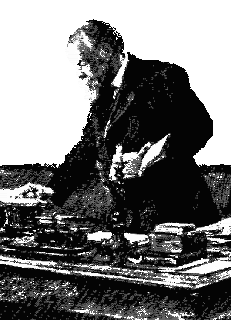 Also interested in what leads to social change, he was a contemporary of the
European social theorists Karl
Marx and Friedrich
Engels, who were influenced by reading his work on social structure and
material culture, the influence of technology on progress. Morgan is the only
American social theorist to be cited by such diverse scholars as Marx, Charles Darwin, and Sigmund Freud. Elected as a
member of the National Academy of
Sciences, Morgan served as president of the American
Association for the Advancement of Science in 1879.
Also interested in what leads to social change, he was a contemporary of the
European social theorists Karl
Marx and Friedrich
Engels, who were influenced by reading his work on social structure and
material culture, the influence of technology on progress. Morgan is the only
American social theorist to be cited by such diverse scholars as Marx, Charles Darwin, and Sigmund Freud. Elected as a
member of the National Academy of
Sciences, Morgan served as president of the American
Association for the Advancement of Science in 1879. 4. The Monogamian Family. As already indicated, this arises out of the pairing family in the transition period from the middle to the upper stage of barbarism, its final victory being one of the signs of the beginning of civilisation. It is based on the supremacy of the man; its express aim is the begetting of children of undisputed paternity, this paternity being required in order that these children may in due time inherit their father’s wealth as his natural heirs. The monogamian family differs from pairing marriage in the far greater rigidity of the marriage tie, which can now no longer be dissolved at the pleasure of either party. Now, as a rule, only the man can dissolve it and cast off his wife. The right of conjugal infidelity remains his even now, sanctioned, as least, by custom (the Code Napoléon expressly concedes this right to the husband as long as he does not bring his concubine into the conjugal home19), and is exercised more and more with the growing development of society.
4. The Monogamian Family. As already indicated, this arises out of the pairing family in the transition period from the middle to the upper stage of barbarism, its final victory being one of the signs of the beginning of civilisation. It is based on the supremacy of the man; its express aim is the begetting of children of undisputed paternity, this paternity being required in order that these children may in due time inherit their father’s wealth as his natural heirs. The monogamian family differs from pairing marriage in the far greater rigidity of the marriage tie, which can now no longer be dissolved at the pleasure of either party. Now, as a rule, only the man can dissolve it and cast off his wife. The right of conjugal infidelity remains his even now, sanctioned, as least, by custom (the Code Napoléon expressly concedes this right to the husband as long as he does not bring his concubine into the conjugal home19), and is exercised more and more with the growing development of society.
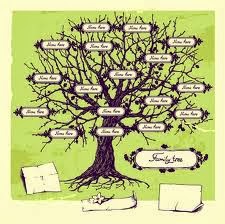












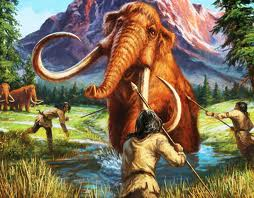

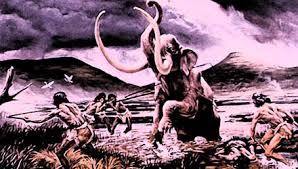
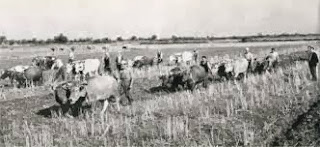



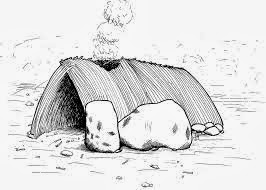






 The formation of class society was first completed in two regions of the Old
World—Mesopotamia and the Nile Valley. The Sumerian and Egyptian civilizations
developed in the fourth millennium B.C., during the Aeneolithic
period. In the Aegean basin (including western Asia Minor), the Indus Valley,
and the Huang Ho Valley early class societies emerged during the Bronze Age, in
the third and second millennia B.C. The problem of the
socioeconomic structure of the first early class societies is open to
discussion. Some Soviet scholars regard them as slave-holding societies; others
view them as societies characterized by the Asiatic mode of production.
Throughout the world, the emergence of class societies was associated with the
period when the use of metals became widespread. The only known exception is the
ancient Mayan kingdom in the New World (first millennium A.D.).
However, the transition to the use of metal implements could not in itself
transform a particular society into a class society. Historians and cultural
anthropologists have found that some peoples did not reach the stage of class
society, even though they were acquainted with the use of iron implements, as
well as copper and bronze ones. If these peoples were exposed constantly and for
a long time to the influence of a major system of more advanced social organisms
based on class, the formation of class society inevitably acquired a specific
character among them. They made the transition to a higher socioeconomic class
formation, skipping stages of development through which the rest of humanity had
already passed. For example, among the Slavs and the Germanic peoples, the
formation of class society was completed with the emergence of the feudal
system.
The formation of class society was first completed in two regions of the Old
World—Mesopotamia and the Nile Valley. The Sumerian and Egyptian civilizations
developed in the fourth millennium B.C., during the Aeneolithic
period. In the Aegean basin (including western Asia Minor), the Indus Valley,
and the Huang Ho Valley early class societies emerged during the Bronze Age, in
the third and second millennia B.C. The problem of the
socioeconomic structure of the first early class societies is open to
discussion. Some Soviet scholars regard them as slave-holding societies; others
view them as societies characterized by the Asiatic mode of production.
Throughout the world, the emergence of class societies was associated with the
period when the use of metals became widespread. The only known exception is the
ancient Mayan kingdom in the New World (first millennium A.D.).
However, the transition to the use of metal implements could not in itself
transform a particular society into a class society. Historians and cultural
anthropologists have found that some peoples did not reach the stage of class
society, even though they were acquainted with the use of iron implements, as
well as copper and bronze ones. If these peoples were exposed constantly and for
a long time to the influence of a major system of more advanced social organisms
based on class, the formation of class society inevitably acquired a specific
character among them. They made the transition to a higher socioeconomic class
formation, skipping stages of development through which the rest of humanity had
already passed. For example, among the Slavs and the Germanic peoples, the
formation of class society was completed with the emergence of the feudal
system.
